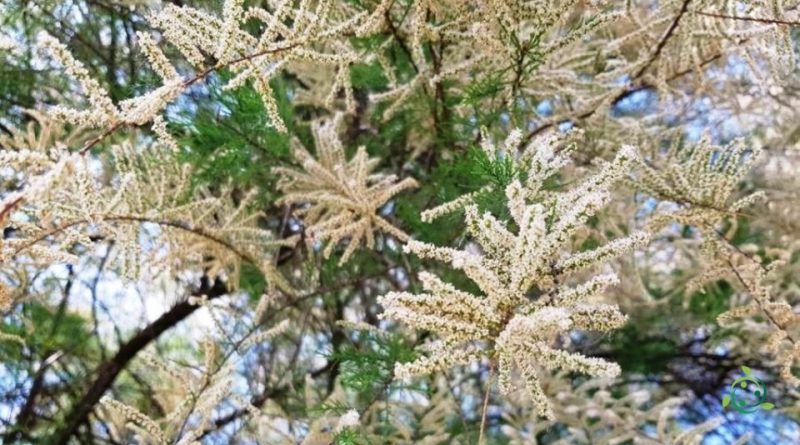Reproduction of French tamarisk
Reproduction of French tamarisk
The French tamarisk (Tamarix gallica L.) is a plant of the Tamaricaceae family native to Saudi Arabia and the Sinai peninsula.
Suitable breeding habitat –
Tamarix gallica is a plant that grows in the form of a deciduous shrub, herbaceous, twig or small tree that reaches up to about 5 meters in height.
This plant is native to Saudi Arabia and the Sinai Peninsula but very common in the Mediterranean region.
Its common habitat is that of coastal environments and stream beds, always in loose, often sandy soils. It also tolerates saltiness and also grows in saline soils, being among the halophytic plants. It is spontaneous in the coastal areas of the western Mediterranean, from 0 to 800 meters above sea level.
Propagation –
The French tamarisk is an easy-to-cultivate plant that grows in most soils and is tolerant of saline conditions.
In fact it manages to vegetate both in heavy clayey soils as well as in sands and even gravel.
However, it is usually found near the coast while it grows inland if it is in a sunny position.
The plant is tolerant of sea winds and dry soils.
Propagation can be by seed. Sowing should be done in spring, taking care to cover the seed and keeping the soil slightly moist.
When the seedlings are large enough to be removed from the seedbed, they are placed in individual pots where they are grown and rooted well for the first winter.
The transplant must then be carried out in spring (after the last frosts) or at the beginning of summer.
It can also be propagated by semi-mature wood cuttings in the initial period of summer; they have a good percentage of taking root.
Another method may be that of preparing cuttings of mature wood, of branches in the current season, 15 – 25 cm long, planted outdoors in late autumn in a nursery or directly in the open field. These also give a high percentage of taking root.
Ecology –
The French tamarisk is a plant that grows in most of the Mediterranean coasts but which, in some areas where it has been introduced, has become invasive.
In the past it was used as fodder as the salty taste was appreciated by the cattle. It is used as an ornamental tree in gardens, parks, avenues; moreover it has been used for the reforestation of sandy and salty places, as a windbreak barrier and for the consolidation of the dunes.
The ecological role of this plant can be manifold as it is a widespread plant in many regions of the world, especially in areas with saline or sandy soils. This plant has a number of ecological adaptations that allow it to thrive in harsh environments and offers several ecological benefits, such as:
– Soil stabilization: Tamarix gallica has dense and deep roots which help retain the soil, especially in areas prone to erosion. This is especially important in coastal and desert environments, where soil can be subject to loss to wind or tides.
– Salt Tolerance: The plant is well adapted to saline soils and can tolerate high levels of salinity in soil and water. This feature makes it suitable for habitats such as coastal areas or saline soils where other plants may struggle to grow.
– Habitat Provision: Tamarix gallica provides habitat for a variety of organisms, including birds, insects, and small animals. Dense shrubs can provide shelter and protection from predators, as well as nesting sites for birds.
– Contribution to diversity: While considered an invasive species in some regions, Tamarix gallica can contribute to biological diversity by providing a diverse vegetation option in specific habitats. This diversity can in turn support a wider range of plant and animal species.
– Water filtering: Tamarisk roots can absorb water and help filter and purify water. This is especially useful in areas where water is prone to contamination.
– Carbon fixation: Like all plants, Tamarix gallica plays the role of fixing atmospheric carbon through photosynthesis, thus contributing to climate regulation, especially in dune and difficult areas.
However it should be noted that Tamarix gallica is also considered an invasive species in some parts of the world, including the United States, where it can displace native vegetation and have negative ecosystem impacts. In some areas, management efforts have been undertaken to control its spread and restore native habitats. Therefore, its ecological role can vary considerably depending on the geographical context and the balance with the other species present.

